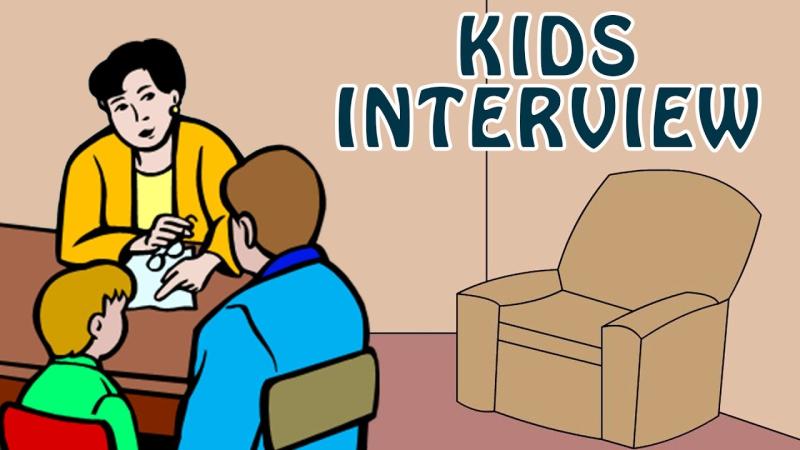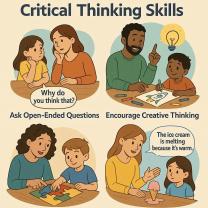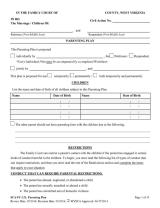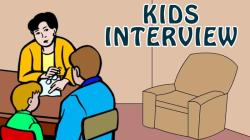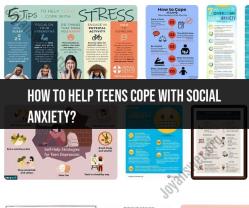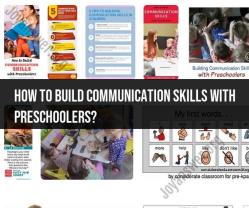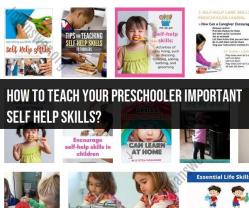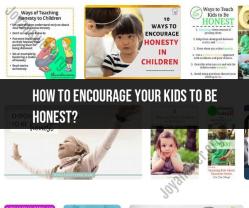How to conduct an interview with a child?
Conducting an interview with a child, especially for purposes like research or journalism, requires a thoughtful and sensitive approach to ensure their comfort, safety, and willingness to participate. Here are some tips and guidelines for conducting an interview with a child:
Obtain Informed Consent:
- If the child is old enough to understand, explain the purpose of the interview and what it will entail. Ask for their consent to participate, and ensure they are comfortable with the process.
Parental or Guardian Consent:
- In many cases, especially when dealing with minors, you may need to obtain parental or guardian consent before conducting the interview. Check the legal and ethical requirements in your area.
Choose a Comfortable and Familiar Location:
- Conduct the interview in a location where the child feels safe and comfortable, such as their home or a familiar setting. This can help reduce anxiety and make the child more open to communication.
Use Age-Appropriate Language:
- Tailor your questions and language to the child's age and level of understanding. Avoid jargon and complex terminology.
Build Rapport:
- Spend some time building rapport with the child before starting the interview. Engage in friendly conversation, show genuine interest, and use open body language to create a positive and trusting atmosphere.
Start with Easy Questions:
- Begin with simple, non-invasive questions to help the child feel at ease. Questions about their name, age, school, or hobbies can be good icebreakers.
Use Open-Ended Questions:
- Ask open-ended questions that encourage the child to provide detailed responses rather than simple "yes" or "no" answers. For example, "Can you tell me about your favorite subject in school?"
Listen Actively:
- Pay close attention to the child's responses. Show that you are actively listening and interested in what they have to say. Use nods, smiles, and other non-verbal cues to convey your engagement.
Be Patient and Respectful:
- Give the child time to formulate their responses. Do not rush or interrupt. Treat the child with respect and dignity throughout the interview.
Avoid Leading Questions:
- Avoid asking leading questions that could influence the child's responses. Instead, aim for neutral and objective queries.
Use Visual Aids (if applicable):
- Depending on the purpose of the interview, visual aids like pictures or diagrams can help the child express themselves or understand the questions better.
Maintain Confidentiality:
- Assure the child that their responses will be kept confidential, except in situations where safety or legal obligations require reporting.
Handle Sensitive Topics with Care:
- If your interview touches on sensitive or potentially traumatic subjects, approach these topics with utmost sensitivity. Offer support and resources if needed.
Respect Boundaries:
- If the child becomes uncomfortable or hesitant to answer specific questions, respect their boundaries and move on to a different topic.
Conclude the Interview Gracefully:
- Thank the child for their time and participation. Leave them with a positive impression of the interview experience.
Follow Up (if necessary):
- Depending on the context, follow up with any necessary steps, such as sharing the interview findings or addressing any concerns raised during the interview.
Remember that the well-being and comfort of the child should be your top priority when conducting interviews with children. Always adhere to ethical and legal standards, and consider consulting with professionals experienced in interviewing children if you have concerns or doubts.
1. How to Create a Comfortable Environment for Interviewing Children
Interviewing children can be a delicate process that requires sensitivity and understanding. Creating a comfortable and supportive environment is essential to put the child at ease and elicit honest and reliable responses. Here are some key steps to creating a child-friendly interview setting:
Choose a Calm and Private Location:
- Select a quiet and private space where the child will not feel interrupted or overheard.
- Avoid noisy or distracting environments such as hallways, cafeterias, or public spaces.
- Ensure the room is comfortable in terms of temperature and lighting.
Establish Rapport and Build Trust:
- Introduce yourself warmly and explain the purpose of the interview in a clear and simple manner.
- Engage the child in conversation to build rapport and make them feel at ease.
- Use a friendly and approachable demeanor, avoiding a formal or intimidating tone.
Adapt Your Communication Style to the Child's Age and Understanding:
- Use simple language, avoiding adult jargon or technical terms.
- Speak slowly and clearly, maintaining eye contact to convey attentiveness.
- Use age-appropriate vocabulary and sentence structures.
Be Patient and Respectful of the Child's Pace:
- Allow the child to answer questions at their own pace, without pressure or time constraints.
- Avoid interrupting or rushing the child's responses.
- Show empathy and understanding if the child expresses discomfort or hesitation.
Use Visual Aids and Sensory Tools to Enhance Communication:
- Incorporate age-appropriate toys, drawings, or games to engage the child and facilitate communication.
- Use visual aids such as pictures, charts, or diagrams to explain concepts or illustrate questions.
- Consider using sensory tools like fidget toys or stress balls to help the child relax and focus.
Seek Parental Consent and Involvement:
- Obtain informed consent from the child's parents or guardians prior to the interview.
- Provide clear explanations of the interview process and purpose to the parents.
- Encourage parental involvement in creating a supportive and comfortable environment for the child.
By implementing these strategies, you can create a welcoming and reassuring environment for children during interviews, fostering open communication and eliciting valuable information.
2. Effective Communication Strategies When Interviewing a Child
Effective communication is crucial when interviewing children to ensure accurate and reliable responses. Here are some key strategies to consider:
Active Listening:
- Pay close attention to the child's verbal and nonverbal cues, such as facial expressions, body language, and tone of voice.
- Reflect back what you hear to demonstrate understanding and encourage further elaboration.
- Avoid interrupting or making assumptions about the child's meaning.
Open-Ended Questions:
- Use open-ended questions that encourage detailed responses rather than simple yes or no answers.
- Start with broad questions and gradually narrow down the focus as needed.
- Provide prompts or cues to guide the child's thinking and expression.
Avoid Leading or Suggestive Questions:
- Phrase questions neutrally to avoid influencing the child's response.
- Avoid questions that suggest specific answers or implant ideas in the child's mind.
- Stick to factual inquiries and avoid asking questions that may evoke emotional distress.
Clarification and Repetition:
- Ask clarifying questions to ensure you understand the child's responses fully.
- Repeat the child's statements back in your own words to confirm their meaning.
- Use simple language and rephrase complex questions if necessary.
Positive Reinforcement and Encouragement:
- Provide positive reinforcement for the child's participation and cooperation.
- Encourage the child to express their thoughts and feelings freely.
- Use verbal and nonverbal cues to convey appreciation and interest in their responses.
Respectful Disagreement and Correction:
- If necessary, correct misinformation or misconceptions gently and respectfully.
- Explain the correct information in a clear and age-appropriate manner.
- Avoid making the child feel embarrassed or belittled for mistakes or misunderstandings.
By employing these effective communication strategies, you can establish a rapport with the child, encourage open communication, and gather accurate and reliable information during interviews.
3. Ethical Considerations When Conducting Interviews with Children
Interviewing children requires ethical considerations to safeguard their well-being and ensure the integrity of the research process. Here are some key ethical principles to consider:
Prioritize the Child's Best Interests:
- Ensure that the interview does not cause any harm or distress to the child.
- Respect the child's right to refuse to participate or withdraw from the interview at any time.
- Be mindful of the child's developmental level and potential vulnerabilities.
Obtain Informed Consent:
- Secure informed consent from the child's parents or guardians prior to the interview.
- Provide clear and concise explanations of the interview process, purpose, and potential risks.
- Ensure that the child understands the voluntary nature of their participation.
**Maintain Confidentiality
